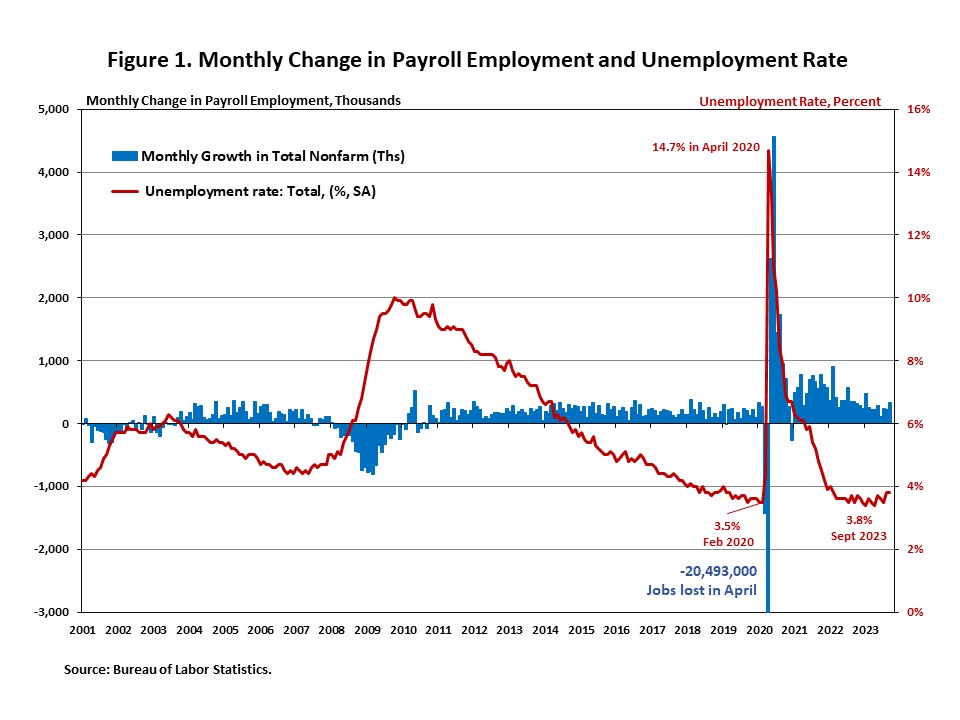Job growth remained solid in September as the Fed fights against inflation. In fact, the recent jobs data has been stronger than most economists expected and is a reminder that GDP growth for the third quarter will be very strong and inflation risks persist. Total nonfarm payroll employment increased by 336,000 and the unemployment rate remained at 3.8% in September.
However, wage growth slowed. In September, wages grew at a 4.2% year-over-year growth rate, down 1.8 percentage points from the highest gain of 5.7% in February 2022. Slowing wage growth was the one positive data point for those hoping for slowing inflation in today’s labor market report.

Total nonfarm payroll employment increased by 336,000 in September, following a gain of 227,000 in August, as reported in the Employment Situation Summary. The estimates for the previous two months were revised higher. The estimate for July was revised higher by 79,000 from +157,000 to +236,000, while the August increase was revised up by 40,000, from +187,000 to +227,000. Despite restrictive monetary policy, nearly 5.9 million jobs have been created since March 2022, when the Fed enacted the first interest rate hike of this cycle. In the first nine months of 2023, nearly 2.3 million jobs were created, and monthly employment growth averaged 260,000 per month, following the average monthly growth of 399,000 in 2022.
The unemployment rate remained at 3.8% in September. The number of unemployed persons was essentially unchanged at 6.4 million, while the number of employed persons increased by 86,000.
Meanwhile, the labor force participation rate, the proportion of the population either looking for a job or already holding a job, remained unchanged at 62.8%. Moreover, the labor force participation rate for people who aged between 25 and 54 was unchanged at 83.5%. While the overall labor force participation rate is still below its pre-pandemic levels at the beginning of 2020, the rate for people who aged between 25 and 54 exceeds the pre-pandemic level of 83.1%.

For industry sectors, employment in leisure and hospitality (+96,000), government (+73,000), health care (+41,000), professional, scientific, and technical services (+29,000), and social assistance (+25,000) increased.
Employment in the overall construction sector increased by 11,000 in September, following a 36,000 gain in August. While residential construction added 12,600 jobs, non-residential construction employment lost 1,300 jobs for the month.
Residential construction employment now stands at 3.3 million in September, broken down as 933,000 builders and 2.4 million residential specialty trade contractors. The 6-month moving average of job gains for residential construction was 8,367 a month. Over the last 12 months, home builders and remodelers added 55,300 jobs on a net basis. Since the low point following the Great Recession, residential construction has gained 1,314,200 positions.
In September, the unemployment rate for construction workers rose by 0.2 percentage points to 5.1% on a seasonally adjusted basis. The unemployment rate for construction workers remained at a relatively lower level, after reaching 14.2% in April 2020, due to the housing demand impact of the COVID-19 pandemic.

Related


